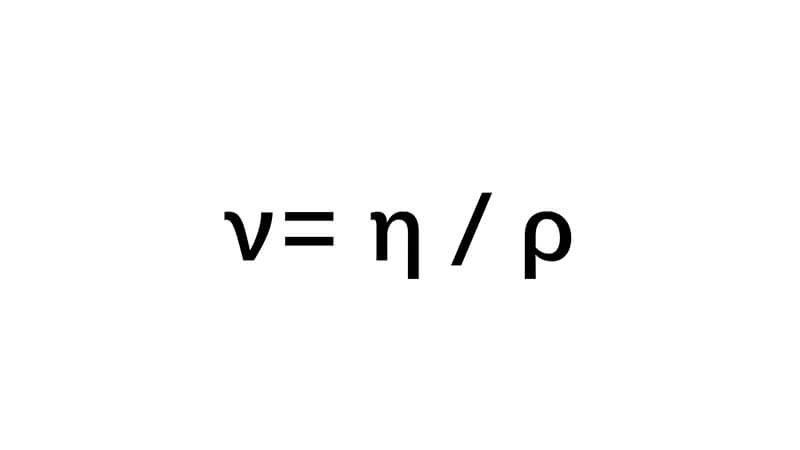You have two datasheets with different viscosity units. One says cP, the other cSt. You cannot compare them, and a wrong choice could ruin your entire product batch.
To convert dynamic viscosity (like cP) to kinematic viscosity (like cSt), you must divide by the fluid's density. The formula is: Kinematic Viscosity = Dynamic Viscosity / Density. This simple calculation is essential for accurate fluid analysis.
My name is Stefan Wang, and as the owner of Martests, I've seen this confusion cost companies a lot of money. A purchasing manager like my client Jacky in Italy might get a quote for an oil with a dynamic viscosity of 80 mPa·s. Another supplier might offer a similar product at 100 cSt. Without understanding the conversion, he can't know which product is actually thicker or a better value. This article will give you the clear formula, tables, and examples you need to convert these values with confidence. It's a critical skill for anyone working in industries that depend on precise fluid properties.
What is a detailed conversion table for viscosity?
You're comparing lubricants from different suppliers. One datasheet uses mPa·s, the other uses cSt. You waste time searching for conversion factors online, risking errors from unreliable sources and delaying your decision.
A detailed conversion table provides direct equivalences between common viscosity units. It simplifies comparing dynamic units (like Poise and Pascal-seconds) and kinematic units (like Stokes and square meters per second), ensuring you are comparing apples to apples.
In my business, accuracy is everything. My clients who distribute lab instruments rely on our viscometers to provide precise data. But that data is only useful if it can be understood and compared. That's why I always provide this information to them. The first step is to understand the fundamental relationship.
The Core Formula: Kinematic = Dynamic / Density
The most important tool is not a table, but a formula.
Kinematic Viscosity (ν) = Dynamic Viscosity (η) / Density (ρ)
- Dynamic Viscosity (η): This measures the fluid's internal resistance to flow under force. Think of it as the "pure" thickness. Common units are centiPoise (cP) or milliPascal-seconds (mPa·s). Luckily, 1 cP = 1 mPa·s, which simplifies things.
- Density (ρ): This is the mass of the fluid per unit volume, usually in grams per cubic centimeter (g/cm³) or kilograms per cubic meter (kg/m³).
- Kinematic Viscosity (ν): This measures how a fluid flows under the force of gravity, and it includes the effect of density. The common unit is centiStokes (cSt).
I always tell my clients, "Get the density right!" A small change in density can significantly alter your kinematic viscosity calculation.
Viscosity Unit Conversion Table
This table helps you convert between the different units for dynamic and kinematic viscosity separately.
| Measurement | Common Unit | Symbol | SI Unit | Equivalence |
|---|---|---|---|---|
| Dynamic Viscosity | centiPoise | cP | milliPascal-second (mPa·s) | 1 cP = 1 mPa·s |
| Dynamic Viscosity | Poise | P | Pascal-second (Pa·s) | 1 P = 100 cP = 0.1 Pa·s |
| Kinematic Viscosity | centiStokes | cSt | square mm per second (mm²/s) | 1 cSt = 1 mm²/s |
| Kinematic Viscosity | Stokes | St | square meter per second (m²/s) | 1 St = 100 cSt = 0.0001 m²/s |
A Step-by-Step Example
Let's imagine a customer in Southeast Asia needs to source a polymer solution. Their spec sheet requires a kinematic viscosity of 250 cSt. A supplier offers them a solution with a dynamic viscosity of 220 cP. The solution's density is 0.88 g/cm³.
- Check the units. Dynamic is in cP and density is in g/cm³. These are the standard units that work together to give a result in cSt.
- Apply the formula. Kinematic Viscosity = Dynamic Viscosity / Density.
- Calculate. Kinematic Viscosity = 220 cP / 0.88 g/cm³ = 250 cSt.
The supplier's product is a perfect match. By performing this simple conversion, my customer can confidently make the purchase. Our Martests viscometers provide the accurate dynamic viscosity data (the 220 cP) that makes this entire process possible and reliable.
Conclusion
Converting between dynamic and kinematic viscosity is simple with the right formula: divide dynamic viscosity by density. Use the tables to ensure your units are correct and make accurate comparisons.


